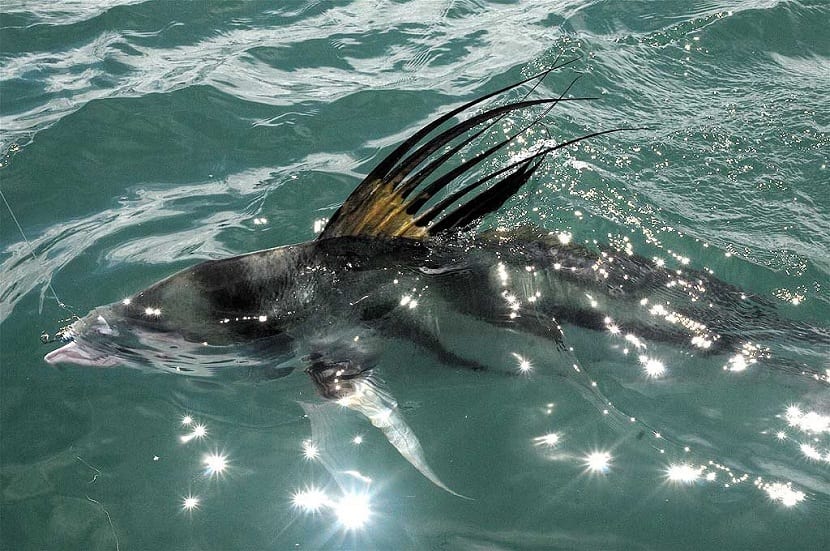
In today's article we are going to know in depth a marine species called Roosterfish. It is one of the most powerful fish in the sea and is quite attractive as a challenge for sport fishing. Having so much strength, it is quite difficult to fish if you are not skilled or skilled with the rod. So as a way to test yourself, this fish is quite fishy. Its scientific name is Lepidorhombus boscii.
In addition to its excellent strength and its attraction as a fish for fishing, you can learn in this article all about its biology, characteristics, behavior, etc. Do you want to learn more about roosterfish? You just have to keep reading.
Key features
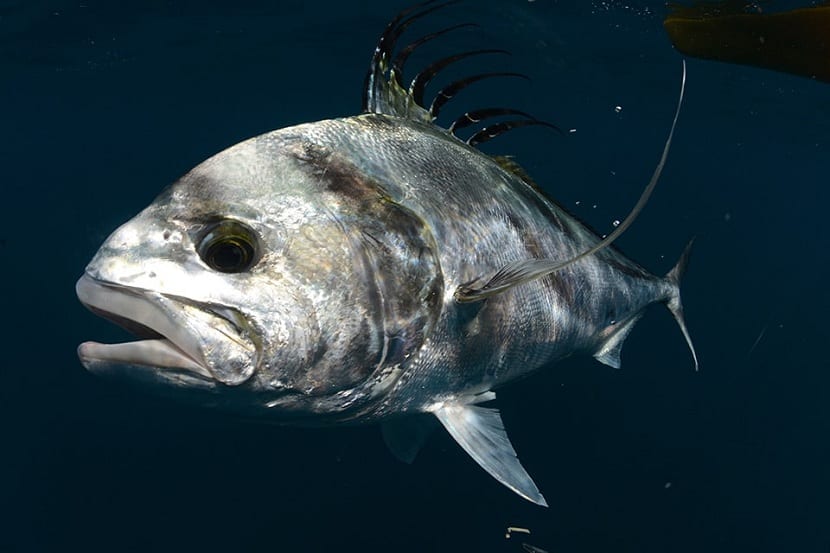
As with the oar fish It has a fairly large body that makes it perfect for fishing. It weighs around 80 pounds and has a body size of 3 meters. This great specimen is quite in demand, although it is true that these measures are quite variable. Depending on the distribution area where it is, it will be larger or smaller.
The body is generally long and large with a special feature. And it is compressed in the front part. Its head is long and the back is quite strong and angular. The mouth has an oblique shape and is marked by a line that passes through the two eyes vertically.
Entering its mouth, we find a jaw that has tiny teeth that protrude and have 18 gill rakers on the lower side of the jaw. In the upper gill arch it has 12 of these brachispines.
As for the color, it presents a bluish gray hue mixed with a hint of silver all over his body. The spots that it has on its back and on the muzzle make it differentiate itself even more easily. It has 2 slats that go from the dorsal fin and extend to the anal fin and the other from the spine to the end of the tail.
Range and habitat
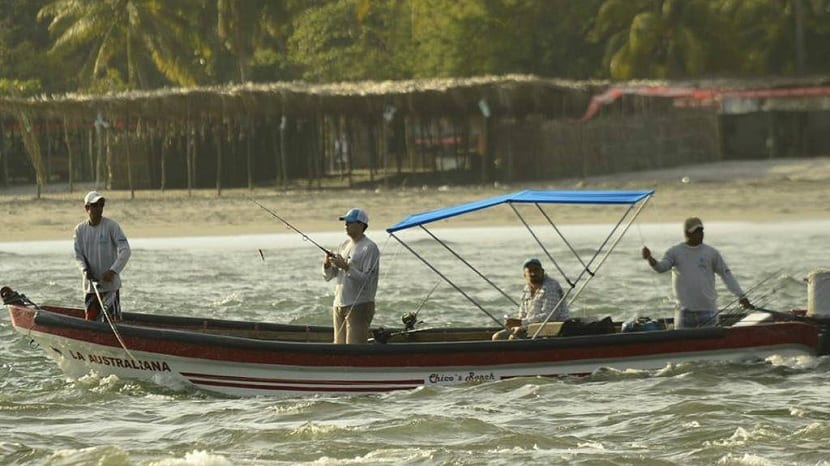
This species shares habitat with the lemon fish. It can usually be seen in habitats near coastal areas. He always seeks to settle near the reefs to seek refuge in the areas with more sand. While this fish takes refuge in the areas with more sand, the lemon fish accompanies you while you are on the seabed.
On some occasions it has been found established at some ends of beaches, estuaries and even lagoons. When they are still juveniles and not fully developed, they can live in shallow waters without problems.
The time of year when sighting and fishing are most frequented is during the months of June to September. Thanks to the skillful movements it can make, it is able to be seen in places such as river mouths, rockier places and areas with strong waves.
Roosterfish feeding and reproduction
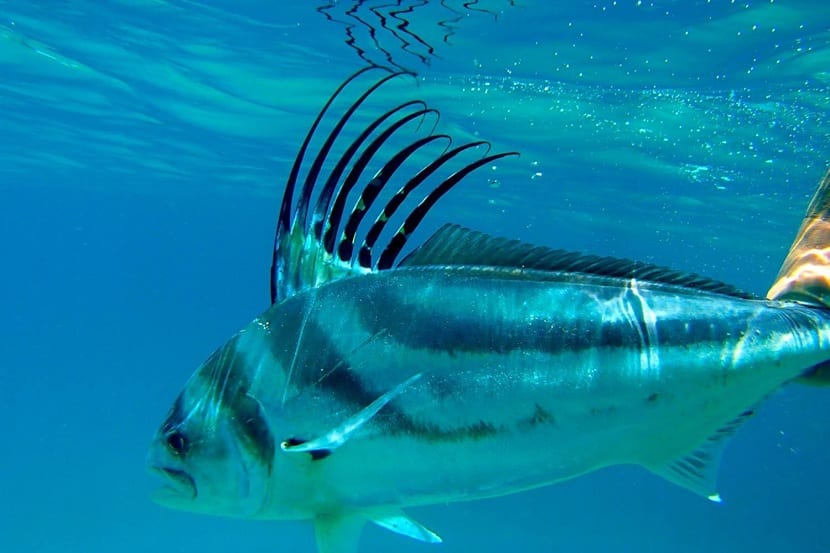
Roosterfish have great speed when moving across the seabed. Thanks to his hunting ability can eat a wide variety de peces of different sizes among which we find the bull or copper fish.
A rather important curiosity is that if these fish are at times when the hunting rate is lower and they begin to be voraciously hungry, they end up resorting to cannibalism. They supplement their diet with specimens of the same species in addition to abusing sardines and koi fish, which they persistently chase until they are caught and eaten.
The mating takes place between the months of July until the end of February. It is the time when reproduction is at its peak. Egg laying can happen in a number of ways. One is in the time from late August to November. The second is from February to April. This time depends on the moment in which they have mated and once the egg formation time has passed.
Roosterfish fertilization is external. Like most of its species, it spawns in shallower areas as they feel more protected. They generally look for places closer to shore where there is less depth. The fry that hatch from the eggs have perfect symmetry and settle close to the surface until they reach maturity.
As they develop, they undergo a series of transformations. The aspect becomes different and gradually loses that symmetry mentioned above. When he decides to go to the seabed, he does so to establish himself for a period of at least two years.
Roosterfish sport fishing
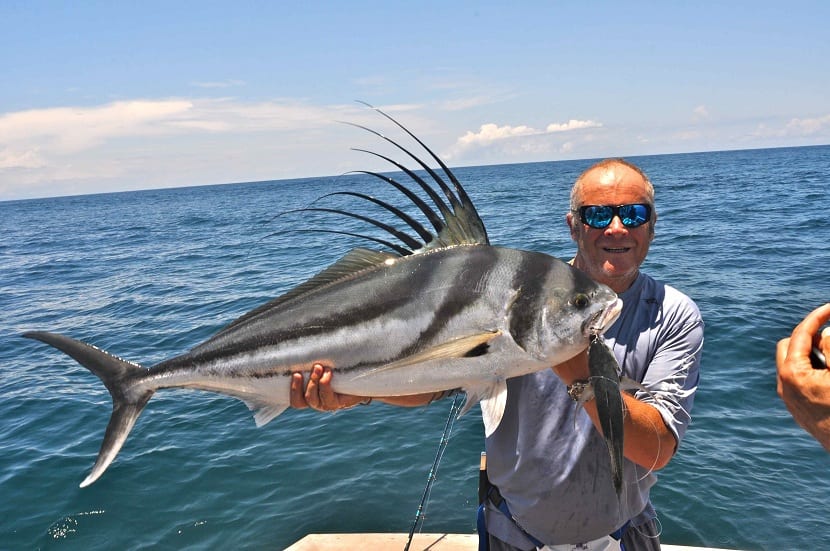
These fish are very successful in the world of sport fishing. What fishermen look for the most is that difficult challenge to overcome and that makes them prove their fishing skills. The highest amount of fishing rate for this animal occurs in the months of March and April, when they are not in full reproduction.
Commercial fishing to sell their meat is done using the skidding technique between 100 and 500 meters deep. Marketing increased as it became famous for its sport fishing. The smallest specimens that have been fished are at 25 cm. Another technique used for its capture is the longline. It is quite important that the areas where there is a greater boom for its fishing are prepared to reduce the environmental impact it causes.
The areas that correspond to the North Atlantic are those in which it has been possible to capture huge specimens with 140 cm in length. However, in the Mediterranean there are other specimens with less size. The areas where they are fished the most are in the Gulf of Cádiz, the Cantabrian Sea and the Northwest.
The problem that occurs, as always, in this type of trawling, is that other species are found. de peces when the target is roosterfish. In addition, it destroys marine morphology and algae species.
I hope that with this information you can learn more about this famous fish.
Hello, very good report. Just flag a bug. The scientific name is Nematistius pectoralis.